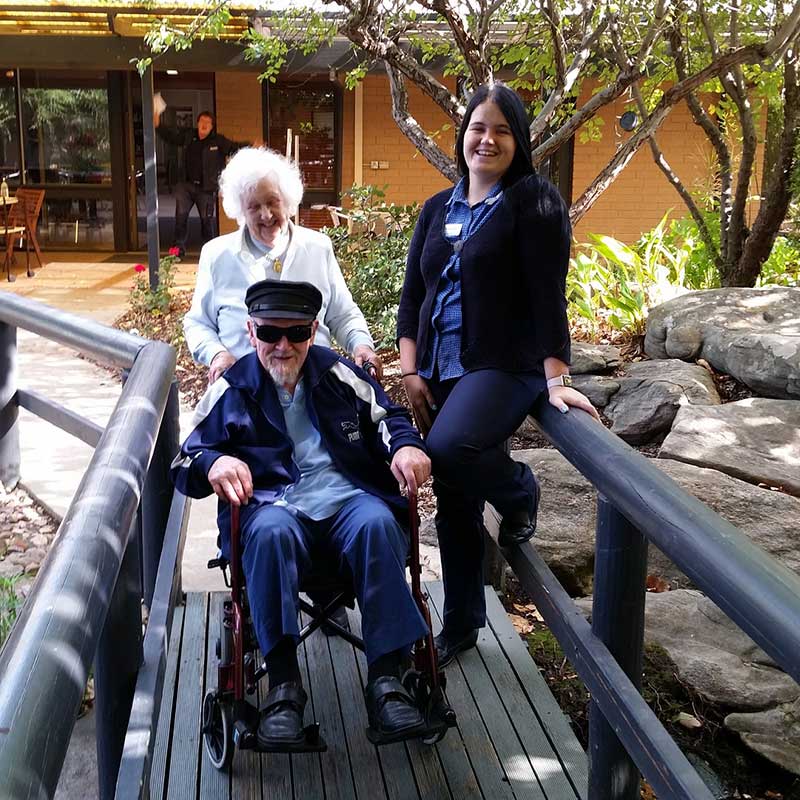These questions can help to determine the type of clothing your elderly friend or relative needs.
To decide whether Clothing is Functional, consider …
- The time required to dress a person – including time to select the clothes
- Design or style of Garment / Fabric – is it flexible enough to make dressing and undressing easy?
- Is dressing and undressing comfortable for the person? Does it cause pain?
- Could garments be adjusted / altered to improve the ease of dressing a person? (for both carer and person)
Health conditions that complicate the dressing task include:
- Pain
- Muscle weakness or tightness
- Surgical procedures
- Neurological disorders
- Poor eyesight
- Changes in perceptions and sensation
- Dexterity of fingers (for doing up fasteners – buttons, zips, Velcro etc)
Consider the questions below
By considering the questions below, a more practical wardrobe of comfortable and appealing clothing may be achieved.
Daytime clothing
What type/style of clothing does a person normally wear during the day?
Does going out clothing differ from staying at home clothing?
Night time clothing
What clothing is worn at night (for sleeping) but is also comfortable whilst resting or staying in bed during the day?
Open back shirts
We offer a range of adaptive clothing with open back to make the dressing task easy. View our range of shirts.
Clothing for Activities
Is a range of clothes required for specific activities?
- Gardening
- Exercise Groups or Sport
- Church
- Social Activities
What’s under the Clothing?
What type of clothing is worn under their normal clothing?
- Bra / underwear / singlet / thermals / incontinence aids
If nothing is worn, determine the reason. Is it:
- Personal preference
- Rash
- Comfort
- Difficulty dressing
Is the clothing provided suitable?
Is the clothing provided suitable for the environment, climate, and purpose?
Consider:
- Modesty
- Body Temperature – do they need thermals to keep warm?
- Protection
What would make the dressing task process easier?
Would any equipment, aids or modified techniques improve and add confidence to the dressing task?
- Walker / Walking frame / Walking stick
- Glasses
- Drawer or Shelf labelling
- Handrails
Adaptive clothing will simplify managing and monitoring health conditions:
- Checking vital signs
- Injecting insulin / or checking Insulin Pump
- Wound dressing / checking for Skin issues
- Applying lotions
Consider the impact of personal equipment or aids on the clothing required:
- Stoma and IDC bags
- Incontinence pads
- Compressions stockings
- Insulin pump
- Pain management pump
Scents evoke memories
Numerous studies have found that scents often evoke emotions in people – either positive or negative.
Aired and odour-free wardrobes keep the clothing crisp and fresh.
Applying deodorant should be a daily part of getting dressed. If not, is there a reason?
- Allergy
- Discomfort
- Expense
- Don’t consider deodorant important
- Uncomfortable applying deodorant
Consider these:
- Roll-on requires less coordination to apply
- Organic deodorants are milder on skin
- Organic deodorants highly recommended for mature, damaged or sensitive skin
These questions will help to clarify your relatives’:
- Personal / Cultural and/or Spiritual preferences
- Clothing choices that will be suitable for their daily needs and activities

